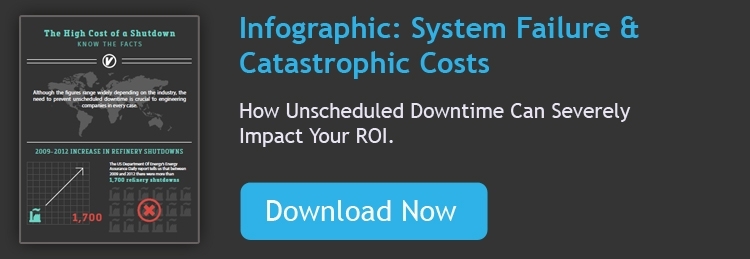In 2008, manufacturers lost $53 billion in productivity due to employee accidents, according to the U.S. Department of Labor Statistics. (OSHA Injury and Illness Prevention Programs White Paper, January 2012).
For workers, their colleagues, and families, workplace accidents can be devastating. For companies, they can lead to loss of morale, increased litigation, and significant financial penalties and losses.
Improving workplace safety benefits everyone in the company—and the good news is that it's surprisingly easy to do.
5 Simple Steps
Although every industry is different, and every company within an industry has its own unique culture and processes, it's still possible to speak broadly about how to reduce accidents in the workplace. If companies practice these 5 simple rules, they will be safer places to work.
Rule 1: Remove the "Short-Cut Culture"
Too many companies focus on end-products and output rates to the exclusion of all other considerations. This can often lead to an "ends justify the means" approach to production tasks where short-cuts become part of everyday life.
When it comes to safety, there are no short-cuts: protective clothing must be worn, machines must be operated at their correct output rates, and equipment must be monitored and upgraded appropriately. To skip steps just to save money or hit deadlines and quotas raises the likelihood that something potentially hazardous or catastrophic will occur.
Rule 2: Take Care of Equipment and Protective Clothing
Equipment and protective clothing must be maintained to the highest standards. Personal protective equipment (PPE) should always be functioning at a high level as well as being correctly fitted to the worker using or wearing it.
A lot of protective equipment being used in American industry today is simply not maintained well enough to meet the safety requirements of the processes involved. If a process requires that workers all wear safety goggles or protective gloves, then it must be someone's responsibility to ensure that this equipment is provided—but it is also imperative to ensure that there are no holes or cracks in the PPE before workers use it in practical, potentially dangerous locations.
Rule 3: Keep Your Workspace Clean and Safe
Simply put, a clean area is definitely a safer area. Although this may seem obvious, many work floors become cluttered and untidy over the course of a working day—if no one takes responsibility to pick up tools or cleaning up oil spilled on the floor, then the likelihood of accidents increases.
While this policy needs to begin at a relatively high level, with supervisors making clear what the rules and expectations are, it is vital that each individual worker knows and accepts that the responsibility for a clean, safe workspace begins and ends with them and their behavior.
Rule 4: Be Alert At All Times
If you are alert on the job and always aware of what's going on around you, the odds of something negative and possibly dangerous happening in your work area are significantly lowered.
Simply by staying focused and aware of your surroundings, you are in a better position to avoid accidents and to help those around you as well. Being alert and mindful is a simple step we all can take to aid in the general safety of our office space or production floor.
Rule 5: Only Do Jobs You Have Been Trained For
Employees should never perform tasks that they've not been specifically trained for—a lack of sufficient training in potentially dangerous processes is a common cause of workplace accidents. If called upon to perform a task that they have not been specifically trained to perform, employees should feel able to refuse without reprisal.
In turn, this means a managerial culture must be in place that not only approves of this level of personal conscientiousness but encourages it. Putting undue pressure on workers to perform tasks without the proper training is a fast track to serious injuries and expensive machine repairs.
Where to Get Help
Improving workplace safety can often mean that the entire culture of an organization has to change, and this doesn't happen overnight. However, it is possible to make your company a significantly safer and more appealing workplace in a very short period of time. And you don't have to go through the process alone.
Look for a partner with the experience to understand your industry and the specific safety requirements of your business. With a training partner who understands how you do business and the risks inherent in your industry, you are in a great position to make the necessary changes to your safety culture, cut down on accidents, and ensure consistent production and profitability for years to come.
Download your FREE copy of this Valin thought leadership article.
Worried about downtime? View this video for more information on how Valin can help your company increase uptime.
